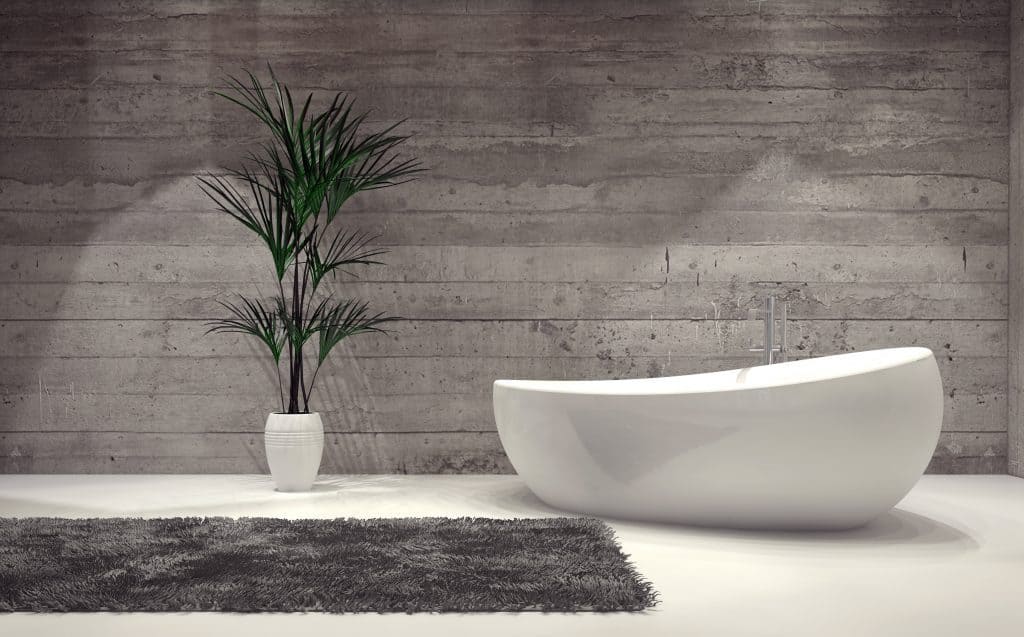
Shiplap is ideal for the bathroom. It adds some unique yet countryside charm to your bathroom.
It can be an alluring and a treasured interior decoration to your bathroom but requires careful installation as to protect it from the moisture in the bathroom. The reason is water and wood are not the best of friends.
If you are weighing your options in adding shiplap in your bathroom, there are several Designs available. It is suitable for interior spaces in modern construction. It lasts long, costs less to maintain than other surfaces, and it’s naturally beautiful. However, it becomes an issue due to the effects of moisture and humidity which is most common in the bathroom.
There are some particular types of wood that have been successful, but in some areas, it may require some quality maintenance. The finish will partially determine how you will take care of the Shiplap.
The Advantages of Having Shiplap in Your Bathroom Include:
- It creates a warm atmosphere especially during winter and bad weather. You can walk around barefoot and feel warm and comfy. The natural timber colors make the bathroom have that countryside warm yet welcoming feel
. It makes the bathroom look beautiful and appealing. It will attract attention due to the unique styles of interior design that is modern yet with a classic appeal.
The effects of moisture to your Shiplap will be among your top priorities as you decide to have it installed in your bathroom. When installing it in your bathroom, consult a Professional installer and seek advice from the vendors and the manufacturers on the best material to purchase.
Moisture in the Bathroom
Wetness can challenge your bathroom addition in the following ways;
Splashing Water and Spills
It will be an issue to reflect when installing a shiplap in your bathroom. Water will splash when showering and bathing. Rinsing your hands or face can cause water to spill. It’s always important to wipe out all water immediately this happens to protect your shiplap.
Uneven Bathroom Floors
Water is likely to slide to lower levels. This can damage the wood and weaken the structure of the shiplap.
Lack of a Moistness Barrier
These include adhesives. Use of planks can cause water to enter through. It is recommended using tongue and groove which are interlocked boards tightly held together, as they prevent water from leaking through the channels.
Flooding in the Bathroom
It is a significant threat to your shiplap. Any leakage from the pipe or the taps should be of concern and requires quick action. Always check under the sinks for any seepage. Consult a qualified Plumber when you suspect that the fixtures have a problem.
Chemical Effects
Chemicals from soaps, body cleansers and shampoos can cause an acidic reaction thereby damaging the shiplap. You can opt for cleansers that are a little bit mild.
High humidity
Steam from a hot bath or shower will cause warm air to penetrate small spaces of the shiplap in your floors, the walls
Mold growth
Due to the moistness of the bathroom, some tiny microscopic organisms will find a suitable environment to thrive. They can grow over boards and underneath the board. It will lead to rotting or decay of the wood. A proper finishing can address this.
Installing a Shiplap in the Bathroom
Factors to consider when installing a shiplap for your bathroom
The Finish
Unprotected shiplap is prone to plumping, expansion or shrinkage, warping
The quality of the finish will also matter. Go for the one used in a watery environment especially those made for external all weather applications. A finish can always be reapplied by sanding to remove the old coat and apply a new fresh coat.
Type of Wood Used
There is a variety of timber for shiplap installations. Look out for the ones ideal for the bathroom. Avoid pine and fir since they are softwood which is less rigid and can quickly absorb moisture. Hardwood like oak, maple, walnut
Also when you order for hardwood ensure it comes with a warranty that has a guarantee for replacement. Read the specifications well before installation because most have special clauses, for water prone environments such as bathrooms. Some vendors avoid giving a guarantee to such shiplap purchased for bathrooms.
Taking care of your Shiplap
Despite the risks of damage caused by moisture, it is possible to prevent this by adequately taking care of the shiplap. You can do this by;
Consistent Maintenance
The finish should be kept in good condition and should be applied regularly. Cracks on your boards should be quickly dealt with once they appear.
Use of Bathroom Mats
You can place them in strategic areas like around the tub or the sink and outside on the doorway. It will assist to absorb any water that might splash or spill. Always dry the mats out in the sun. These mats should be able to absorb any moisture, therefore, preventing leakages to the wood.
Use of Decorative Tiles
You can install tiles around the boundary of your bathroom. Not only will they add the allure, but will keep water in check. The tiles are also easy to clean and stay dry.
Check other Fixtures Regularly
These include the pipes and taps, the support sinks and the lavatory valves links. Lack of proper maintenance can lead to leaks of water to the shiplap.
Conclusion
You should consider shiplap in your bathroom only when your level of maintenance is high and regular. Since bathrooms are naturally wet areas, it’s essential to use a professional to have it fitted and have routine maintenance of fixtures.

